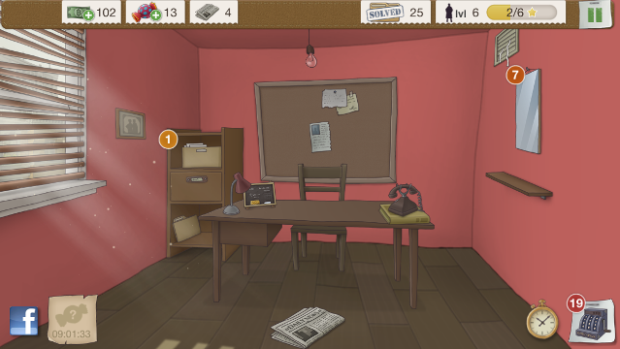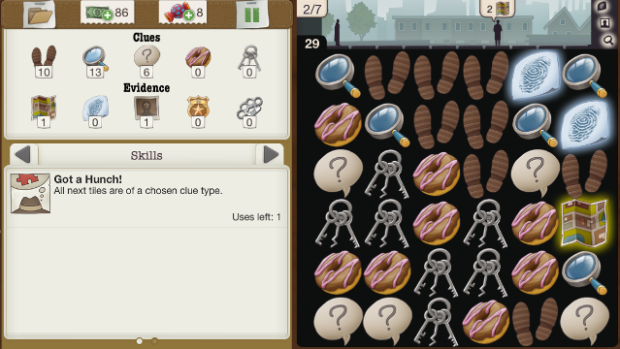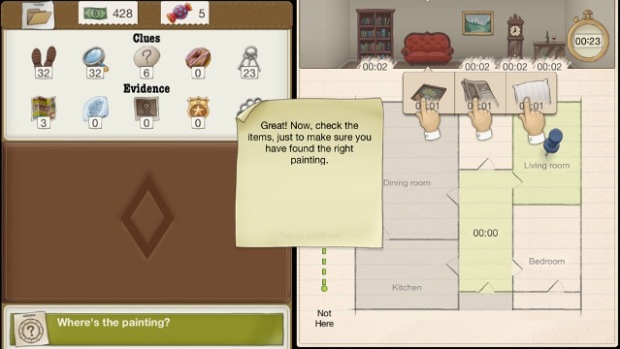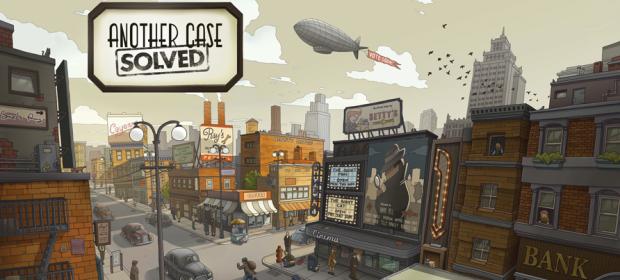If Batman, Professor Layton and Sherlock can tell us one thing, it’s that the world loves a good detective. Of course, becoming a good detective “for reals” isn’t quite the same as these fictional sleuths. Still, at least there are games like Another Case Solved available, even if this one is more of a light puzzle game than a fully-fledged brain teaser.
Set in a prohibition-era locale where sugar is the illicit substance of choice, it is your duty as a newly established private detective start-up, to work your way up the ladder and become the greatest detective you can be. While your initial days are spent finding missing cats for a measly amount of cash, the cases become a little juicier. However, the story and contents of each case are more of a framing device for a hybrid of several smaller mini-games that gradually get more difficult as clients come with more important cases.

The first mini-game involves gathering clues and evidence, and is entirely based on chaining together three or more objects on a grid, with the required number of objects (clues) determined by icons at the top of the screen. If five or more of these clues are chained in one move, a piece of evidence appears which is sometimes requested, and are used in the other mini-games. However, you only have a set number of moves to find all the evidence you need.
Some cases require that you identify a suspect from a series of mug shots, via a set number of Guess Who?-like questions (are they male/female? Do they have freckles? Etc…). If you picked enough pieces of photographic evidence in the previous mini-game, then you are able to ask more questions to pick out your suspect.

Another mini-game involves finding a location in the city. You are shown grid of the city and given hints such as “2 squares from the Cafe” – however, some of these location markers are hidden and require pieces of evident from the chaining mini-game before you can fully see the map. It is down to you to use these hints to find the grid square you are looking for.
Finally, there’s a Crime Scene investigation game, giving you a blueprint of the building you are in, and a gauge that shows you how close you are to finding the item or clue you are looking for. An in-game clock gives you a time limit in which to find what you need, but this is depleted every time you enter a new room or examine an object. Once again, clues earned in the chaining mini-game will make your job a whole lot easier.

All of these mini-games get much tougher, and are almost impossible if not for several perks and tools that can be purchased with both in-game money and in-app purchases for Candy, which is required to purchase some items. While I never felt the need to purchase anything with real money (mainly because a number of Candy is found in your office every 12 real-time hours, or by watching some adverts), the chaining mini-game in particular can get really frustrating as you clearly don’t have enough moves to get everything you need, especially as some of the required clues can take ages to appear. From then on your only choice is to save your in-game cash for useful items, or reach for your wallet.
VERDICT: By the time you get to Chapter 2, where the difficulty starts to ramp up, the whole premise begins to wear thin, and it’s very easy to completely lose interest when it’s constantly clear that the game is pushing you to buy items by becoming frustratingly difficult. It’s a shame, because the whole thing starts off as a relatively fun diversion. It’s just another example of a decent game shackled by the need for in-app purchasing.

DECENT. A 6/10 indicates that, while this game could be much better, it still has a fair amount to offer the player. It might be an interesting title sabotaged by its own ambition, or a game denied greater praise by some questionable design choices. Don’t avoid it outright, but approach it with caution.
Review code provided by publisher.






